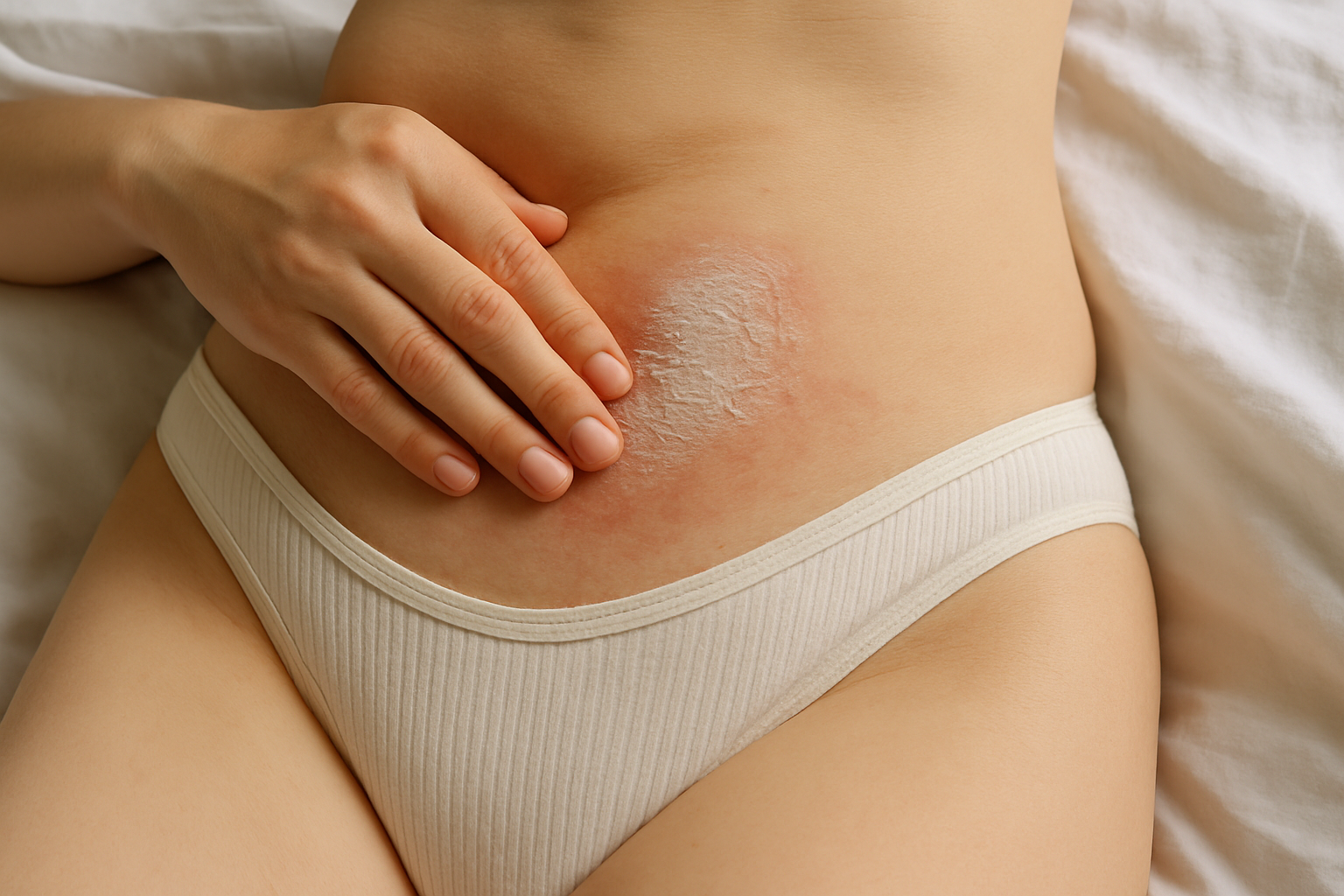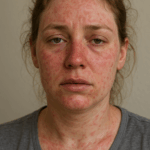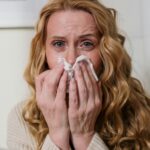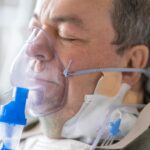At AskDoctor.ai, we understand that living with a condition like lichen sclerosus can be physically painful and emotionally exhausting. The uncertainty, discomfort, and stigma that often accompany this diagnosis can leave many feeling isolated and unsure of where to turn. That’s why we’ve created this content to empower you with clear information, compassionate support, and practical treatment options. Whether you’re newly diagnosed or supporting a loved one, we aim to help you navigate lichen sclerosus with confidence and care.
Lichen sclerosus (LS) is a chronic, non-contagious skin condition that typically affects the genital and anal areas. It causes discomfort, including itching, pain, and skin changes, which can impact daily activities and mental well-being. While LS is most common in postmenopausal women, it can also affect men and children. Understanding the condition and exploring available treatments can help those affected manage their symptoms and regain comfort.
In this article, we’ll explore the causes, symptoms, and treatment options for lichen sclerosus, providing practical tips for managing the condition and improving quality of life. Whether you’re newly diagnosed or have been living with LS for a while, understanding these key aspects is essential for better management.
Symptoms & Causes of Lichen Sclerosus
What Is Lichen Sclerosus?
Lichen sclerosus is a condition that causes the skin to become thin, white, and fragile. In many cases, the affected areas are prone to tearing, scarring, and itching. According to the Mayo Clinic, LS is most commonly seen in postmenopausal women but can affect anyone, including men and children. The condition can cause discomfort, especially in the genital or anal areas, impacting daily activities like urination or sexual intercourse.
Symptoms of Lichen Sclerosus
Symptoms of lichen sclerosus vary in severity but typically include:
- Itching: Persistent itching, especially in the genital and anal areas, is one of the most common early signs of LS.
- White Patches: The skin in affected areas often becomes pale, shiny, and prone to tearing. These white patches may appear on the vulva, penis, or anus.
- Pain and Discomfort: As the skin becomes thinner, it can cause pain during activities such as urination, sexual intercourse, or even sitting for long periods.
- Tears and Blisters: The skin may become so fragile that it tears or forms blisters, leading to further discomfort and potential infections.
- Scarring: If left untreated, LS can cause permanent scarring, which may alter the structure of the affected area, particularly in the genital region.
Causes of Lichen Sclerosus
The exact cause of lichen sclerosus remains unclear, but several factors are believed to contribute:
- Autoimmune Response: Lichen sclerosus is thought to be an autoimmune condition, where the body’s immune system mistakenly attacks healthy tissues. According to research from PubMed, there is strong evidence suggesting autoimmune involvement.
- Hormonal Changes: LS is more common in postmenopausal women, indicating that hormonal imbalances, particularly a decrease in estrogen, may trigger or worsen the condition.
- Genetic Factors: Studies show that people with a family history of autoimmune diseases are more likely to develop LS, suggesting a genetic predisposition.
- Infections: While LS isn’t caused by infections, some studies suggest that certain bacterial or viral infections may trigger the condition in susceptible individuals.
Importantly, LS is not contagious, meaning it cannot be passed from person to person through sexual contact or other forms of interaction.
Treatment Options for Lichen Sclerosus
Though there is no cure for lichen sclerosus, several treatment options are available to help manage symptoms and improve quality of life. A combination of conventional treatments and lifestyle adjustments can be effective in controlling flare-ups and preventing long-term damage.
Conventional Treatments
1. Topical Steroids
- How They Work: The first line of defense against lichen sclerosus typically involves potent topical corticosteroids, like clobetasol, which help reduce inflammation, relieve itching, and promote skin healing.
- Effectiveness: These steroids are often effective in managing the symptoms, but they should be used under the guidance of a healthcare provider to avoid side effects. Studies recommend applying these creams twice daily, then reducing the frequency as symptoms improve.
- Possible Side Effects: Long-term use can lead to thinning of the skin, so it’s essential to follow your doctor’s instructions.
2. Topical Calcineurin Inhibitors
- How They Work: Drugs like tacrolimus or pimecrolimus help suppress the immune system and reduce inflammation in the affected areas. These are often used as alternatives to steroids, particularly for long-term management.
- Effectiveness: Research shows that these medications can be highly effective for some individuals, especially those who experience side effects from steroids.
3. Moisturizers and Emollients
- How They Work: Regular use of fragrance-free moisturizers can help prevent dryness and irritation, which is crucial in managing LS. These products help maintain skin hydration, reducing discomfort.
- Application: Apply a gentle moisturizer after bathing, and reapply throughout the day as needed. Choose a product specifically designed for sensitive skin to avoid further irritation.
4. Phototherapy (Light Therapy)
- How It Works: Phototherapy uses controlled UV light to treat skin conditions. It is particularly effective in treating autoimmune diseases like LS.
- Effectiveness: Light therapy can help reduce inflammation and promote skin healing in individuals with moderate to severe lichen sclerosus.
5. Surgery (for Severe Cases)
- How It Works: In cases where scarring or structural changes have occurred, surgical intervention may be necessary to remove damaged tissue or correct anatomical changes caused by LS.
- Effectiveness: Surgery is typically reserved for individuals who have not responded to other treatments.
Alternative and Complementary Treatments
In addition to conventional treatments, some individuals with LS find relief through complementary therapies. It’s essential to consult with a healthcare provider before trying alternative treatments.
1. Dietary Adjustments
- Anti-Inflammatory Diet: Eating a diet rich in anti-inflammatory foods can help support overall skin health. A study in PubMed highlights the role of omega-3 fatty acids and antioxidants in reducing inflammation in autoimmune conditions.
- Avoiding Trigger Foods: Some people find that processed foods, high-sugar items, or certain allergens can trigger flare-ups. Tracking your food intake and symptoms may help you identify potential triggers.
2. Herbal Remedies
- Aloe Vera: Aloe vera gel is well-known for its soothing properties. Applying aloe vera directly to the affected area may help calm itching and promote healing.
- Calendula: Calendula creams are another herbal remedy that can reduce inflammation and support the skin’s healing process.
3. Stress Management
- Why It Helps: Stress can exacerbate autoimmune conditions, including lichen sclerosus. Studies show that managing stress through activities like yoga, meditation, and deep breathing exercises can help reduce flare-ups and improve overall health.
Real-Life Success Stories
Traci’s Story: Diagnosed in Childhood, Finding Empowerment
Traci began experiencing symptoms in childhood but went years without a diagnosis. She faced confusion, pain, and emotional distress until finally being diagnosed with lichen sclerosus. Today, she advocates for awareness and early detection, encouraging others not to give up.
Watch her full story on YouTube
Sam’s Treatment Journey: From Discomfort to Relief
Sam opened up about her lichen sclerosus journey in a conversation with Dr. Shirin. After receiving proper treatment, she experienced significant symptom relief and was able to regain confidence in her everyday life.
Watch Sam’s recovery story here
Lifestyle Adjustments & Management Tips
Living with lichen sclerosus requires more than just medical treatment. Lifestyle changes can also help reduce flare-ups and improve your skin’s condition.
- Wear Loose Clothing: Tight-fitting clothes can irritate sensitive skin. Choose loose, breathable fabrics to reduce friction and discomfort.
- Use Gentle Products: Avoid harsh soaps or fragranced products. Stick to mild, fragrance-free cleansers and moisturizers specifically formulated for sensitive skin.
- Moisturize Regularly: Regular moisturizing helps keep the skin hydrated, preventing dryness and reducing irritation.
- Track Symptoms: Keeping a journal of your symptoms can help you identify patterns and potential triggers. This can be valuable information for your doctor in determining the best treatment plan.
- Healthy Diet: A diet rich in anti-inflammatory foods, such as fatty fish, fruits, and vegetables, can help support skin health and manage inflammation.
FAQs About Lichen Sclerosus
Is lichen sclerosus contagious?
No, LS doesn’t spread from person to person. It develops due to autoimmune dysfunction, not because of an infection.
Is it possible to cure lichen sclerosus?
Doctors haven’t found a cure for LS yet. However, you can manage symptoms and control flare-ups with the right treatment.
How long does it take for treatment to work?
Treatment usually starts showing results within several weeks to a few months, depending on how severe your condition is. You need to follow your treatment plan consistently to see improvement.
Conclusion: Take Control and Reclaim Comfort
Living with lichen sclerosus may feel overwhelming at times, but with the right approach, symptoms can be controlled, and comfort can be regained. Whether through topical treatments, lifestyle adjustments, or alternative therapies, there are many ways to manage LS effectively. Whether you’re just beginning to understand this condition or have been living with it for years, know that you are not alone, and help is available. Early diagnosis, consistent treatment, and compassionate self-care can make a profound difference in your well-being.
If you’re dealing with persistent symptoms, don’t wait—talk to a healthcare provider and explore your options. The sooner lichen sclerosus is addressed, the better the outcomes. Have you been managing lichen sclerosus? Share your experiences and tips in the comments or online communities. Your story could be the encouragement someone else needs to seek help and find relief.
References:
Mayo Clinic
PubMed
National Institutes of Health (NIH)
American Academy of Dermatology (AAD)
Cleveland Clinic
British Association of Dermatologists
Harvard Health
American Family Physician









Leave a Reply